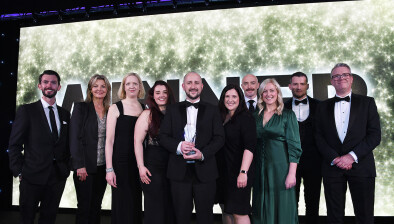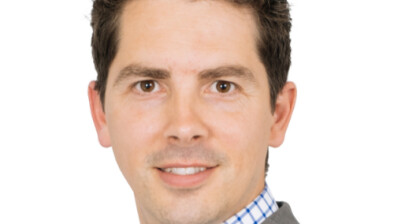University of Edinburgh receives green light to transform former surgical hospital
 Edinburgh’s former Royal Infirmary Surgical Hospital, a category-A listed building at the heart of the Quartermile development, has received detailed planning permission to become a major new facility for the University of Edinburgh.
Edinburgh’s former Royal Infirmary Surgical Hospital, a category-A listed building at the heart of the Quartermile development, has received detailed planning permission to become a major new facility for the University of Edinburgh.
Designed by Bennetts Associates working with project managers Faithful+Gould, the scheme is to be known as the Edinburgh Futures Institute, and encompass 21,300sqm of floor space, of which 6,000sqm will be additional new space.
The approval follows the anonymous donation of £10 million towards the transformation, the biggest ever capital donation to the University.
Edinburgh Futures Institute will bring together researchers from across the University with other partners to tackle major issues within the economy, education and societies across the world.
It will be a place that interrogates the opportunities and challenges of an age in which data and the digital disrupt old institutions and foster the creation of new ones.
The old hospital comprised multiple buildings from the 19th to the late 20th centuries including the original Royal Infirmary designed by David Bryce from 1870-1879. The architect was influenced by the ‘pavilion’ model of ward design founded by nursing pioneer, Florence Nightingale. Each ward was to be three stories tall with large windows, which was thought to better circulate fresh air, combat contagion and therefore mortality rates.
 With the more recent medical facilities already cleared for construction, the historic building is to be restored, extended and upgraded to form a flexible space that enables collaboration among students, staff and partner organisations. In recognition of the historic building’s importance to the wider community, the multimillion pound development will include a public piazza, garden spaces and a large subterranean multi-functional space for events and lectures.
With the more recent medical facilities already cleared for construction, the historic building is to be restored, extended and upgraded to form a flexible space that enables collaboration among students, staff and partner organisations. In recognition of the historic building’s importance to the wider community, the multimillion pound development will include a public piazza, garden spaces and a large subterranean multi-functional space for events and lectures.
The former hospital site as a whole, now known as Quartermile, covers an entire block of Edinburgh’s inner city – reaching from the Meadows in the south to Lauriston Place in the north, and from the Middle Meadow Walk in the east to Chalmers Street in the west. The project is the largest to date in a £1.5 billion investment programme being carried out by the University over ten years.
Rab Bennetts, director of Bennetts Associates, said: “Having worked continuously for the University of Edinburgh for 14 years we are acutely aware of the importance this project has to the institution and to the city. The Edinburgh Futures Institute demonstrates the University’s ambitions, not only in the world of higher education, but also in architectural patronage. We are privileged to see our ideas for new interventions so readily adopted.”
Vice-Principal Professor Dorothy Miell, head of the College of Arts, Humanities and Social Sciences, said: “The world is experiencing major changes: climate volatility, political discontent, advances in artificial intelligence, economic upheavals. This presents big challenges. We need different ways of thinking about these issues and of devising new solutions.
“Edinburgh Futures Institute will make that difference. It will blend theoretical and practical knowledge. It will work with organisations dealing directly with these challenges and curate meaningful interactions between seemingly disparate disciplines. We want our students to embody this approach and our partners to share the vision and help us to develop it.”
 On receiving the £10m donation, Professor Sir Timothy O’Shea, Principal of the University, added: “We are deeply grateful for this visionary gift to the University, which will help us to create a truly exceptional teaching and research environment within the Edinburgh Futures Institute. The Institute will challenge us to think differently about how we can affect change, both locally and globally.
On receiving the £10m donation, Professor Sir Timothy O’Shea, Principal of the University, added: “We are deeply grateful for this visionary gift to the University, which will help us to create a truly exceptional teaching and research environment within the Edinburgh Futures Institute. The Institute will challenge us to think differently about how we can affect change, both locally and globally.
“By marrying our world-class expertise in the humanities, arts and social sciences with our sector-defining research in new data technologies, it will produce practical solutions and new approaches for the common good. This generous gift will help realise this vision.”
The main construction period is programmed to start in 2018 and be ready for occupation by the University in mid-2021.
All images courtesy of Bennetts Associates
















